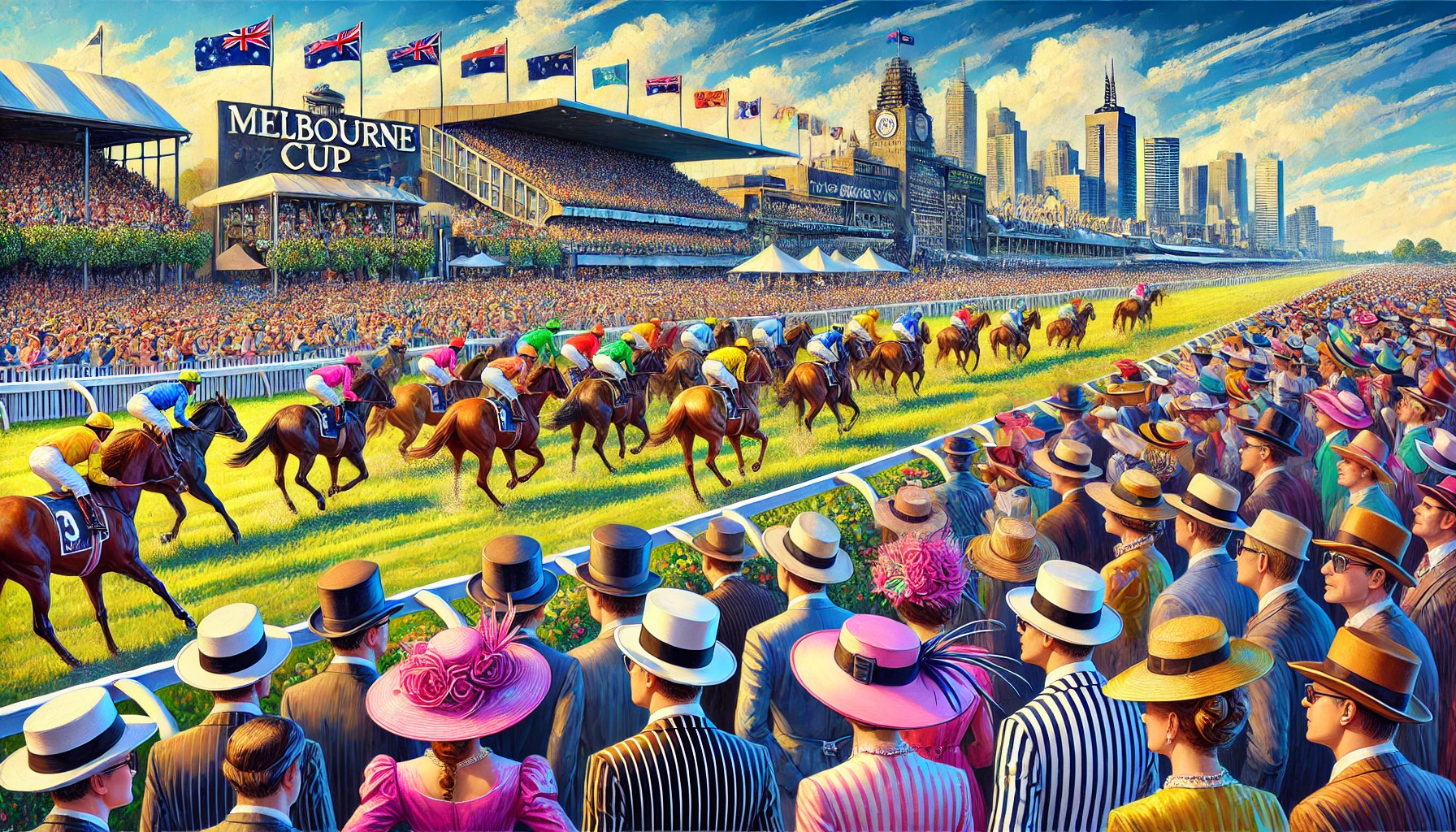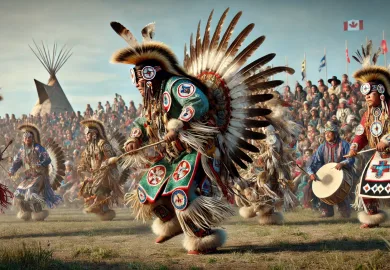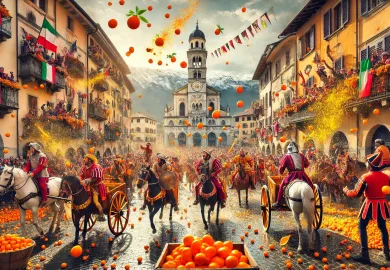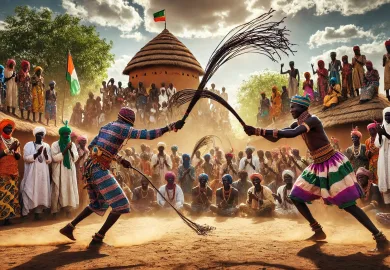
The Melbourne Cup, often referred to as “the race that stops a nation,” is an iconic event in Australia that captures the attention of millions each year. Held on the first Tuesday of November, this horse race has become a significant part of Australian culture, attracting a diverse audience from casual spectators to dedicated horse racing enthusiasts. With a rich history dating back to the 19th century, the Melbourne Cup has evolved into more than just a sporting event—it’s a celebration of fashion, culture, and national pride.
The History and Legacy of the Melbourne Cup
The Melbourne Cup’s history is deeply intertwined with Australia’s colonial past. First run in 1861, the race was initially a relatively modest affair. However, it quickly gained popularity, and by the late 19th century, it had become a fixture in the Australian sporting calendar. The race was created to attract the best thoroughbred horses from around the country and beyond, offering a substantial prize that drew the interest of horse owners, trainers, and jockeys.
The legacy of the Melbourne Cup is also marked by memorable moments and legendary horses. One of the most famous horses in the race’s history is Phar Lap, who won the Cup in 1930 during the Great Depression. His victory provided a sense of hope and pride for Australians during a difficult time. Other notable horses include Makybe Diva, who won the race three consecutive times from 2003 to 2005, a feat that has yet to be matched.
The Cup’s importance extends beyond the race itself. It has become a cultural phenomenon, with traditions such as the Melbourne Cup Day public holiday in Victoria, allowing more people to participate in the festivities. The race’s legacy is also preserved through the Melbourne Cup Tour, where the coveted trophy travels across Australia, bringing the excitement of the race to different communities.
The Glamour and Fashion of Melbourne Cup Day
One of the most anticipated aspects of the Melbourne Cup is the fashion. The event is not just about the race; it’s also a showcase of style and elegance. Attendees often spend weeks preparing their outfits, with an emphasis on bold colors, intricate designs, and eye-catching accessories. The Flemington Racecourse, where the Melbourne Cup is held, transforms into a vibrant display of haute couture, with both men and women donning their finest attire.
For women, the Melbourne Cup is synonymous with extravagant hats and fascinators. These headpieces have become a staple of race day fashion, ranging from delicate, understated designs to large, elaborate creations that make a bold statement. The competition for the best-dressed is fierce, with prizes awarded for standout outfits, making fashion a central part of the Melbourne Cup experience.
Men also participate in the fashion spectacle, with many opting for tailored suits, often complemented by colorful ties or pocket squares that add a touch of flair. The emphasis on fashion during the Melbourne Cup has also influenced broader trends in Australian fashion, with many designers using the event as an opportunity to showcase their latest collections.
The Melbourne Cup’s fashion scene is not just limited to those attending in person. The event is broadcast across the country, and even those watching from home or attending Cup-themed parties are encouraged to dress up, making it a nationwide celebration of style.
The Racing Experience: More Than Just a Horse Race
While fashion and history play significant roles, the Melbourne Cup is, at its core, a thrilling horse race. The race itself is run over a distance of 3,200 meters, making it one of the longest and most challenging races in the world. It is open to horses aged three years and older, attracting a competitive field of local and international contenders.
The race’s atmosphere is electric, with the crowd’s anticipation building as the horses make their way to the starting gate. The moment the gates open, the noise level at Flemington Racecourse reaches a crescendo, with spectators cheering on their chosen horses. The race is a test of endurance, strategy, and skill, with jockeys and horses needing to navigate the course’s long straights and tight turns.
Betting is an integral part of the Melbourne Cup experience. Millions of dollars are wagered on the race each year, with many Australians participating in office sweeps or placing bets through bookmakers. The excitement of betting adds another layer of intensity to the race, as even casual viewers find themselves invested in the outcome.
The Melbourne Cup’s appeal also lies in its unpredictability. While favorites often perform well, the race has seen its fair share of upsets, where underdogs have triumphed against the odds. This element of surprise keeps the race exciting year after year, ensuring that no two Melbourne Cups are ever the same.
The Cultural Impact of the Melbourne Cup
The Melbourne Cup’s influence extends far beyond the confines of the racecourse. It has become a symbol of Australian identity and is celebrated with a public holiday in Victoria. On Cup Day, businesses close early, and schools often hold special events, allowing people to come together and enjoy the race, whether they are at Flemington, watching from home, or attending one of the many Cup-themed events held across the country.
The Cup also has a significant social impact. It brings people together, fostering a sense of community and shared experience. This is evident in the large gatherings at Flemington Racecourse, where people from all walks of life come together to enjoy the day’s festivities. The event also serves as a platform for charitable initiatives, with many organizations using the Melbourne Cup as an opportunity to raise funds for various causes.
Moreover, the Melbourne Cup has a strong international presence, attracting visitors from around the world. The race is broadcast to millions of viewers globally, showcasing Australian culture and hospitality on an international stage. This global reach has helped cement the Melbourne Cup’s status as one of the most prestigious horse racing events in the world.
The Cup’s cultural impact is also evident in the arts, with the race inspiring numerous works of literature, music, and visual art. The Melbourne Cup has been the subject of poems, songs, and paintings, reflecting its deep connection to Australian life and culture.
In conclusion, the Melbourne Cup is more than just a horse race. It is a rich tapestry of history, fashion, sport, and culture that has become an integral part of Australia’s national identity. Whether you’re a horse racing enthusiast, a fashion lover, or simply someone who enjoys being part of a shared national experience, the Melbourne Cup offers something for everyone, making it a truly unique event on the global sporting calendar.








